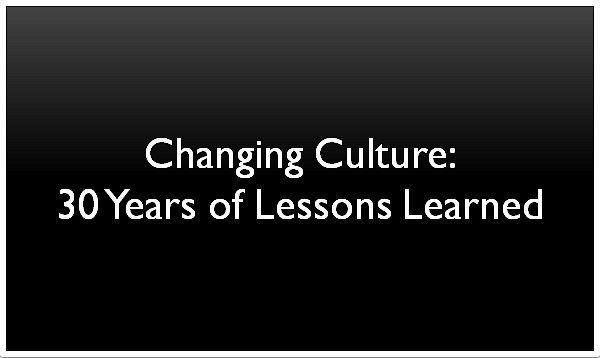3 Strategies for Shaping Culture
3 Strategies for Shaping Culture
Culture Development Strategies from Ford:
When Alan Mulally joined Ford in 2006 it was close to bankruptcy. It had lost 25% of its market share from 1990. It had a wide portfolio of vehicles but few made sufficient margins, brands were not performing well and the need for capital infusions was continuous.
Development time lagged, labor costs were exceptional and operating margins were uncompetitive. At his retirement in 2014, Mulally was lauded not just for the financial constraints that he brought to the company but for the culture change which led Ford back to market leadership.
Alan Mulally was a master at culture change. First, he drafted and widely articulated his vision of One Ford where everyone in the enterprise and its partners were One Team, leveraging knowledge across groups, focusing on what customers needed and bringing financial excellence to all aspects of the business.
He immediately started to created conditions to propel new thinking and behaviors. For example, when he arrived meetings were described as mortal combat where leaders fought for self-preservation. Mulally quickly introduced new meeting norms to create a safe environment where data could be explored without blame.
He focused everyone on what the customer needed and valued and made sure behaviors supporting collaboration and innovation were encouraged and rewarded. He introduced new meeting, planning and innovation practices and strengthened trust and candor. He redesigned structure and systems.
Over time he let go talent that did not display One Team behaviors. The result is a vibrant innovation culture balanced on trusting relationships and financial discipline. Mulally did what prior leaders failed to do – he built on culture strengths and shaped new ones.
Here are the first 3 culture change strategies to this blog series.
1. CREATE A FUTURE FOCUS – Link strategy, brand and culture
Unite around the purpose for strengthening culture. Paint a picture of future culture needs based on purpose, strategy and business outcomes. Communicate the future state culture needed for longer term success broadly and consistently so that employees hear the same thing from all leaders. Be clear and concise.
2. ASSESS YOUR CULTURE – Know how it operates to support strategy
Identify culture strengths and development needs. Conduct a culture assessment so that leaders understand the organization’s and their unit’s culture strengths and the way they operate to support and impede future success. Help them understand and prioritize culture development needs related to strategies and goals. Look beyond engagement to areas of culture needed to support high performance and strategic imperatives. Look beyond the past. With disruptive external change and new kinds of competitors, the culture that was sufficient in the past may not be sufficient for tomorrow. Pay attention to how your organization is supporting innovation, collaboration, agility, productivity, and customer experience.
Provide data for action. While it’s important to look at enterprise culture strengths and development needs, sub-cultures also play a role in strategy and goal execution. Provide meaningful current culture data to top executives and their leadership teams so that they can see how aligned their group and/or functional results are with enterprise results and if an additional culture strength is important for their area of responsibility.
Frame the need for culture work. When the current culture brought past success, it’s hard to feel safe about embracing a ‘culture change’. Use positive, future focused language such as ‘leveraging current strengths’, ‘evolving to deliver new kinds of strategies’ and ‘building new kinds of culture muscle’.
3. SET CULTURE PRIORITIES – Focus on one or two only
Focus, focus, focus. Culture is sticky. Identify 1-2 priority areas and focus on these for one year to get a substantial change that sticks. Build cohesion across the executive team, first that these priorities are the areas that will be acted on, resourced and measured. For large organizations, each group or function with specific needs may need to identify another culture priority. For example, a new acquisition may need to focus on Process Discipline in addition to the Cross-Boundary Collaboration priority established for the enterprise.
Drive attention to what’s most important. Complete a quick audit all of the changes to the organizational system underway. Root out those that are misaligned or will consume resources that should be directed to supporting the culture change. For example, if the priority is strengthening cross-boundary collaboration, halt the new bonus scheme that does not reward this and examine every ‘all managers’ meeting for where and how collaboration can become part of the agenda.
Be clear. Describe a small set of key behaviors to illustrate what beliefs and behaviors will be valued. Have conversations about what to ‘stop, start, continue’. For example, Alan Mulally focused on rational, ‘no blame’ behaviors when reviewing data and results.
Don’t miss out on Part 2 of this series where we will discuss: Creating Your Culture Playbook, Amplifying Effect Of Leader Behaviors, Aligning The Organization ‘System’ and Making it Personal.










